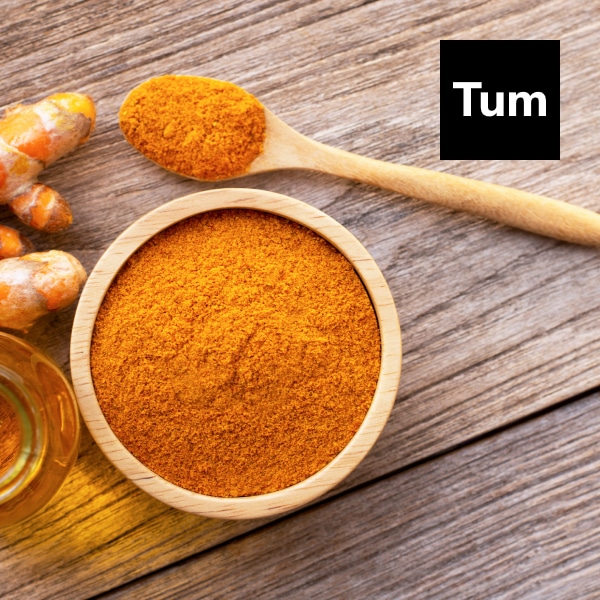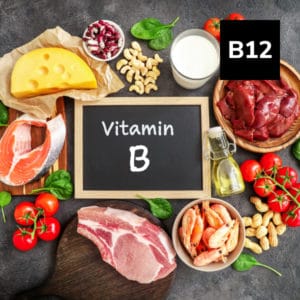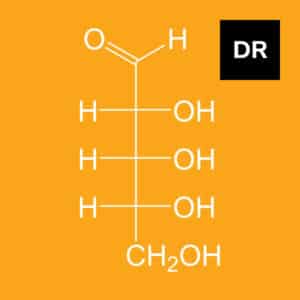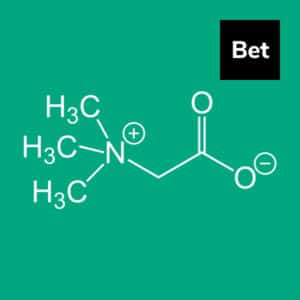Overview
Turmeric, the bright yellow-orange spice that gives curry its yellow color, has strong antioxidant and anti-inflammatory properties which help provide the body with an array of health benefits.
Key Benefits
- Helps reduce pain and stiffness of knee osteoarthritis
- Helps reduce skin ailments including acne, dermatitis, etc. in both topical and oral supplement form.
- Provides antioxidant effects
- Reduces inflammation
- Helps increase brain levels of brain-derived neurotrophic factor (BDNR), a type of growth hormone that supports brain function
- Supports cardiovascular health by reducing LDL levels in the blood and improving endothelial function
- May support healthy blood glucose
History of Usage
Turmeric (Curcuma longa) is a ginger-related herb that is commonly grown in southern and southwestern tropical Asia. The golden spice, extracted from the plant’s rhizome, has been used in the cuisines of the Far and Middle East, as well as Polynesia, for centuries for its yellow hue and flavor.
Turmeric gets its name from the Latin “terra merita,” which translates as “meritorious earth.” For thousands of years, it has been valued as a culinary spice, cosmetic, herbal medicine, and religious ceremony.
For millennia, it has been used as a folk medicine in India and China to treat dermatological diseases, infection, stress, depression, gynecological problems, gastrointestinal problems, hepatic disorders, infectious diseases, and blood disorders.
Turmeric’s health benefits are mostly attributed to an orange-yellow colored, lipophilic polyphenol compound called “curcumin,” which is obtained from the herb’s rhizomes. Today, we know from scientific research and clinical trials that curcumin is both safe and effective for a variety of health conditions.
Biochemistry
Turmeric (Curcuma longa) is a ginger family flowering plant. Anti-inflammatory, antibacterial, antioxidant, and antineoplastic activities have been demonstrated in the roots. Numerous chemical compounds, including polyphenols, sesquiterpenes, diterpenes, triterpenoids, sterols, and alkaloids, have been identified from this spice. Curcumin, which accounts for between 2% and 5% of turmeric, is likely the most researched component. While curcumin can imitate some of turmeric’s effects, others are curcumin-independent. Turmeric has been shown in cell-based research to have antibacterial, insecticidal, larvicidal, antimutagenic, radioprotective, and anticancer properties. This spice has been demonstrated to affect a variety of cell signaling pathways at the molecular level. Animal studies have demonstrated that this spice may have anti-inflammatory properties and may be beneficial in the treatment of cancer, neurological illnesses, depression, diabetes, obesity, and atherosclerosis. Turmeric has demonstrated benefit in clinical trials against a variety of human illnesses, including lupus nephritis, cancer, diabetes, irritable bowel syndrome, acne, and fibrosis.
Recent Trends
Interest in turmeric continues to grow as formulators learn more and more about its functional benefits and versatility in supplements, foods, and cosmetics.
Curcumin, turmeric’s active constituent, has become very popular as an anti-inflammatory because of its effectiveness and safe track record. According to the SPINS market research group, during the 52 weeks ending Oct. 6, 1029, cross-channel sales growth for turmeric was 1.8%, reading $143 million.
Snacks using turmeric in their ingredients accounted for 9% of all new turmeric products launched in 2015 and 2019.
Turmeric is also being used in teas, juices, and coconut waters. Innova Market insights indicated that new turmeric product launches in hot drinks and soft drinks grew by 1 percentage point from 2015 to 2019. From 2015 to 2019, food and beverage launches that included turmeric grew by 10%, with the most popular applications in ready-meals, sauces, and seasonings. In 2020, turmeric was even used in effervescent drinks and gels.
Precautions
Turmeric is very safe for most people. Occasionally people might experience mild effects such as an upset stomach.
References
1. Vaughn AR, Branum A, Sivamani RK. Effects of Turmeric (Curcuma longa) on Skin Health: A Systematic Review of the Clinical Evidence. Phytother Res. 2016 Aug;30(8):1243-64. doi: 10.1002/ptr.5640. Epub 2016 May 23. PMID: 27213821.
2. Devin K. Binder & Helen E. Scharfman (2004) Mini Review, Growth Factors, 22:3, 123-131, DOI: 10.1080/08977190410001723308
3. Singhal S, Hasan N, Nirmal K, Chawla R, Chawla S, Kalra BS, Dhal A. Bioavailable turmeric extract for knee osteoarthritis: a randomized, non-inferiority trial versus paracetamol. Trials. 2021 Jan 30;22(1):105. doi: 10.1186/s13063-021-05053-7. PMID: 33516238; PMCID: PMC7847013.
4. Marton LT, Pescinini-E-Salzedas LM, Camargo MEC, Barbalho SM, Haber JFDS, Sinatora RV, Detregiachi CRP, Girio RJS, Buchaim DV, Cincotto Dos Santos Bueno P. The Effects of Curcumin on Diabetes Mellitus: A Systematic Review. Front Endocrinol (Lausanne). 2021 May 3;12:669448. doi: 10.3389/fendo.2021.669448. PMID: 34012421; PMCID: PMC8126655.
5. Kocaadam B, Şanlier N. Curcumin, an active component of turmeric (Curcuma longa), and its effects on health. Crit Rev Food Sci Nutr. 2017 Sep 2;57(13):2889-2895. doi: 10.1080/10408398.2015.1077195. PMID: 26528921.
6. Gupta SC, Sung B, Kim JH, Prasad S, Li S, Aggarwal BB. Multitargeting by turmeric, the golden spice: From kitchen to clinic. Mol Nutr Food Res. 2013 Sep;57(9):1510-28. doi: 10.1002/mnfr.201100741. Epub 2012 Aug 13. PMID: 22887802.
7. Hewlings SJ, Kalman DS. Curcumin: A Review of Its Effects on Human Health. Foods. 2017; 6(10):92. https://doi.org/10.3390/foods6100092




